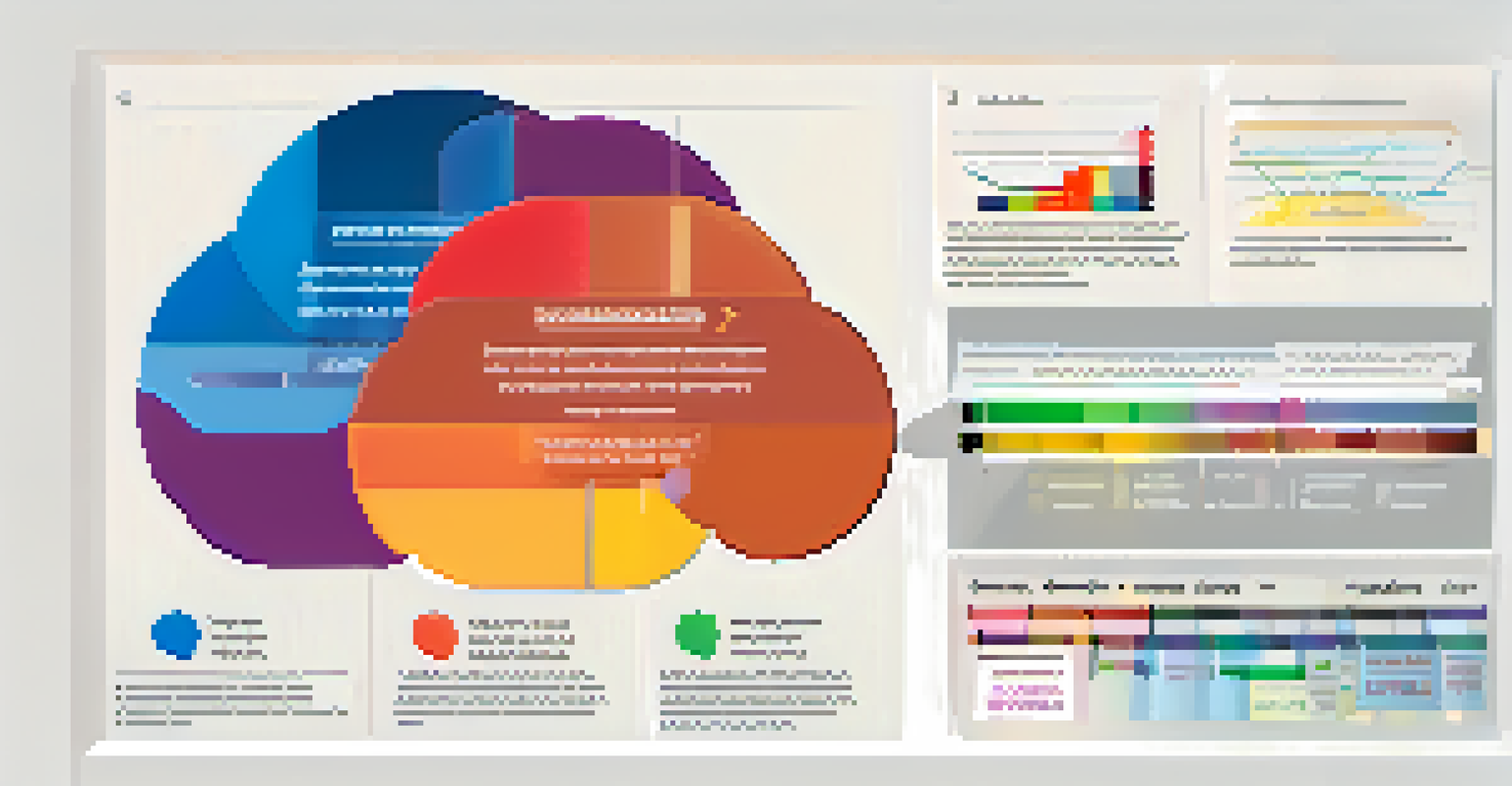Cognitive Load Theory: Optimizing Online Learning Experiences

Understanding Cognitive Load Theory in Education
Cognitive Load Theory (CLT) is a framework that helps us understand how our brains process information. Developed by psychologist John Sweller in the 1980s, it emphasizes the importance of managing the amount of information we take in while learning. By recognizing that our working memory has limits, educators can design more effective learning experiences.
The mind is like a parachute. It doesn't work if it is not open.
Imagine trying to carry multiple heavy boxes at once; it’s tough and overwhelming! Similarly, when learners are bombarded with too much information, they become overloaded, leading to confusion and decreased retention. Thus, CLT encourages a thoughtful approach to instructional design by breaking down complex information into manageable chunks.
In online learning environments, where distractions are plentiful, applying CLT can significantly enhance engagement and comprehension. By minimizing extraneous cognitive load, educators can foster deeper understanding and retention, making learning more effective and enjoyable.
The Three Types of Cognitive Load Explained
Cognitive load can be categorized into three types: intrinsic, extraneous, and germane. Intrinsic load refers to the inherent difficulty of the material itself, which varies based on the learner's prior knowledge and experience. For instance, a beginner learning algebra will face a higher intrinsic load than someone already familiar with basic math concepts.

Extraneous load, on the other hand, stems from the way information is presented. Poorly designed instructional materials or overwhelming visuals can increase this load unnecessarily. Think of it as trying to read a book in a noisy café; the distractions make it harder to focus on the content.
Understand Cognitive Load Theory
Cognitive Load Theory helps educators design effective learning experiences by managing the amount of information presented to learners.
Finally, germane load is the mental effort dedicated to processing and understanding the information. This is the ideal load, as it enhances learning by encouraging learners to make connections and apply what they've learned. Striking the right balance among these loads is key to optimizing the learning experience.
Why Managing Cognitive Load is Crucial for Online Learning
In the realm of online learning, managing cognitive load is particularly crucial due to the potential for information overload. With countless resources and formats available, learners can quickly become overwhelmed, hindering their ability to absorb information. By focusing on cognitive load, educators can create clearer and more focused learning pathways.
Learning is not the product of teaching. Learning is the product of the activity of learners.
For example, a well-structured online course may use concise videos, clear summaries, and interactive quizzes to maintain an optimal cognitive load. This approach not only helps learners retain information but also keeps them motivated and engaged. When learners feel competent and in control of their learning, they are more likely to succeed.
Furthermore, as we navigate the digital age, the ability to effectively manage cognitive load will become increasingly important. By prioritizing cognitive load in online education, we can ensure that learners not only acquire knowledge but also develop critical thinking skills and a love for learning.
Strategies to Reduce Extraneous Cognitive Load
Reducing extraneous cognitive load is essential for creating a streamlined online learning experience. One effective strategy is to simplify the design of instructional materials. Clear visuals, straightforward language, and organized layouts can make information more digestible for learners.
Another technique is to minimize multimedia distractions. While videos and graphics can enhance learning, too many of them can lead to cognitive overload. Instead, educators can use a judicious mix of text, images, and audio to keep learners focused on the core content without overwhelming them.
Three Types of Cognitive Load
Cognitive load consists of intrinsic, extraneous, and germane types, each affecting how learners process and retain information.
Additionally, providing clear instructions and expectations can help learners navigate their online courses more effectively. When learners know what to expect, they can allocate their cognitive resources more efficiently, allowing them to focus on understanding the material rather than deciphering confusing instructions.
Enhancing Germane Load to Boost Learning Outcomes
To enhance germane load, educators should encourage active learning strategies that promote deeper engagement with the material. For instance, incorporating problem-solving activities, discussions, and collaborative projects can help learners connect new information to their existing knowledge. This active involvement fosters a sense of ownership over their learning journey.
Another effective way to enhance germane load is through spaced repetition. By revisiting key concepts at intervals over time, learners reinforce their understanding and retention. Think of it like watering a plant; consistent care helps it grow stronger and healthier.
Lastly, offering feedback and opportunities for self-reflection can significantly aid in enhancing germane load. When learners receive constructive feedback, they can adjust their approaches and deepen their understanding, ultimately leading to improved learning outcomes.
Utilizing Technology to Support Cognitive Load Management
Technology plays a vital role in managing cognitive load in online learning environments. Learning management systems (LMS) can help streamline content delivery, ensuring that information is presented in a logical, sequential manner. By breaking down courses into smaller modules, learners can tackle one concept at a time, easing the cognitive burden.
Moreover, adaptive learning technologies can personalize the learning experience by adjusting content based on individual learner needs. This tailored approach helps to balance intrinsic cognitive load, ensuring that learners are neither bored nor overwhelmed as they progress through the material.
Technology Supports Learning Needs
Utilizing technology in online learning can help manage cognitive load by personalizing content and streamlining instructional delivery.
Additionally, tools like interactive quizzes, discussion forums, and multimedia resources can enhance engagement while reducing extraneous load. By leveraging technology wisely, educators can create a more effective and enjoyable online learning experience for all.
The Future of Online Learning and Cognitive Load Theory
As online learning continues to evolve, the principles of Cognitive Load Theory will remain essential in designing effective educational experiences. With the rise of artificial intelligence and personalized learning pathways, there is great potential to tailor content to individual cognitive needs, fostering deeper engagement and understanding.
Moreover, as educators increasingly embrace blended learning models, applying CLT will be crucial in balancing face-to-face interactions with online components. This hybrid approach allows for more dynamic learning experiences, where cognitive load can be managed effectively across different contexts.

In conclusion, understanding and applying Cognitive Load Theory will be key to shaping the future of online education. By prioritizing the cognitive needs of learners, we can create richer, more meaningful educational experiences that inspire curiosity and a lifelong love of learning.